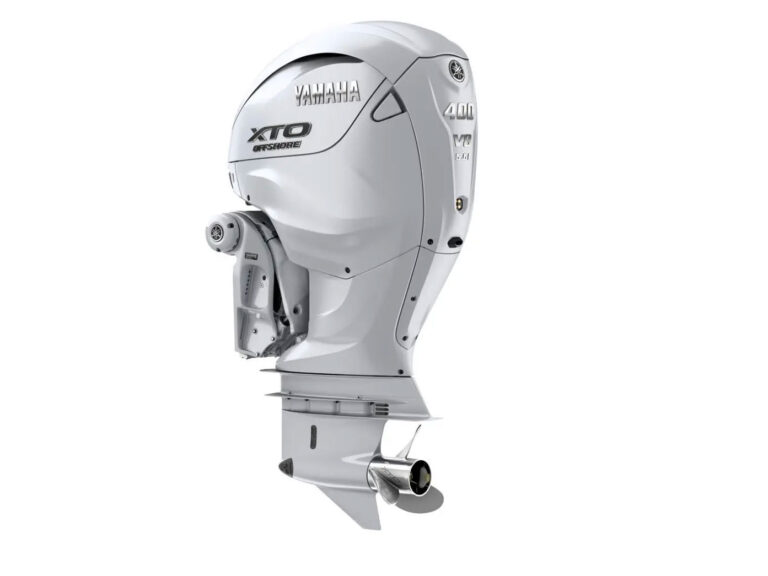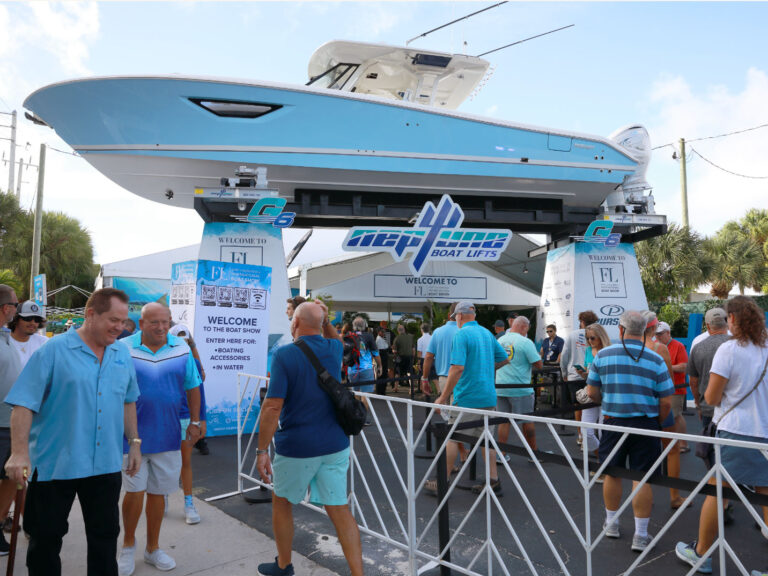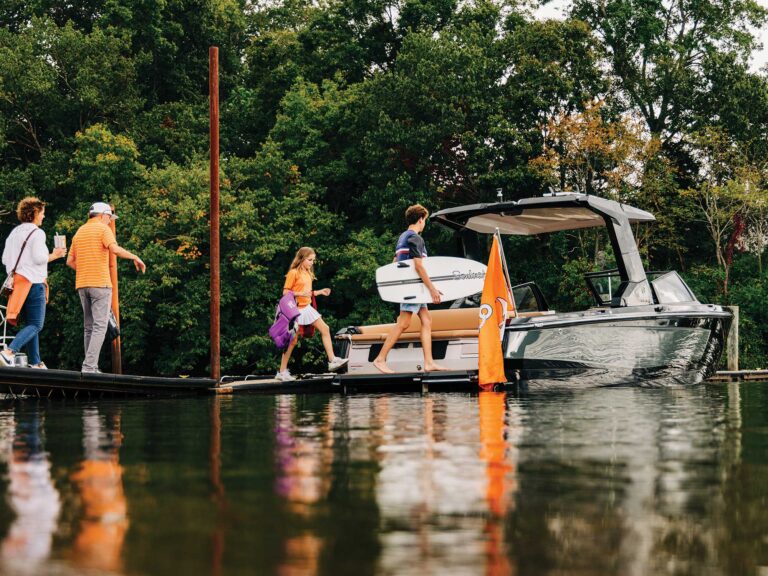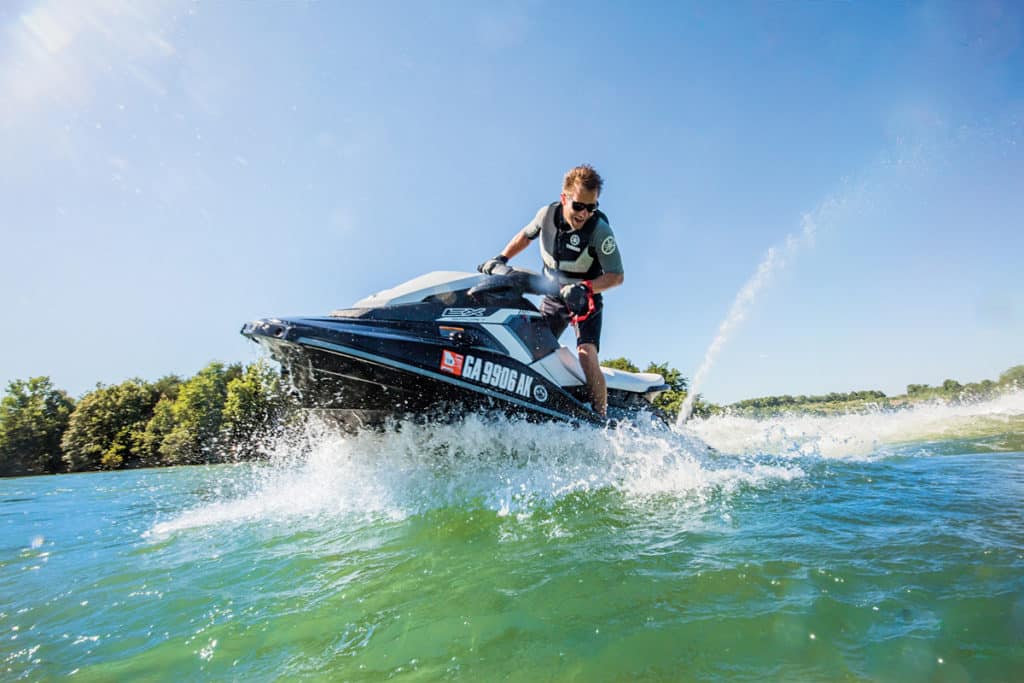
The EX Sport is the middle child in a new three-model lineup that marks Yamaha‘s entrance into the so-called “Rec Lite” category, machines designed to place more focus on fun and affordability than the PWC industry’s typical performance offerings. The latter is obvious. At 10 feet 3 inches long, the EX is noticeably shorter — and narrower — than the 11-foot V1 that formerly held down the entry-level slot. Its upper deck is also simpler in style, with fewer angles and style lines, only basic rearview mirrors, and a no-frills saddle. Affordability, however, doesn’t translate to cheap. The hull and deck are made of the same high-compression, glass-fiber-reinforced polyester (SMC) used throughout the line. And though the dimensions may be shorter, the boat still accommodates three passengers, whether they be of the mom, dad or child variety, or exceptionally cozy adults. As to that fun factor, just take a ride. Though the boat can carve a precise turn when desired, play with your weight distribution and you can break the craft free just like the PWC of old. Power slide, anyone?
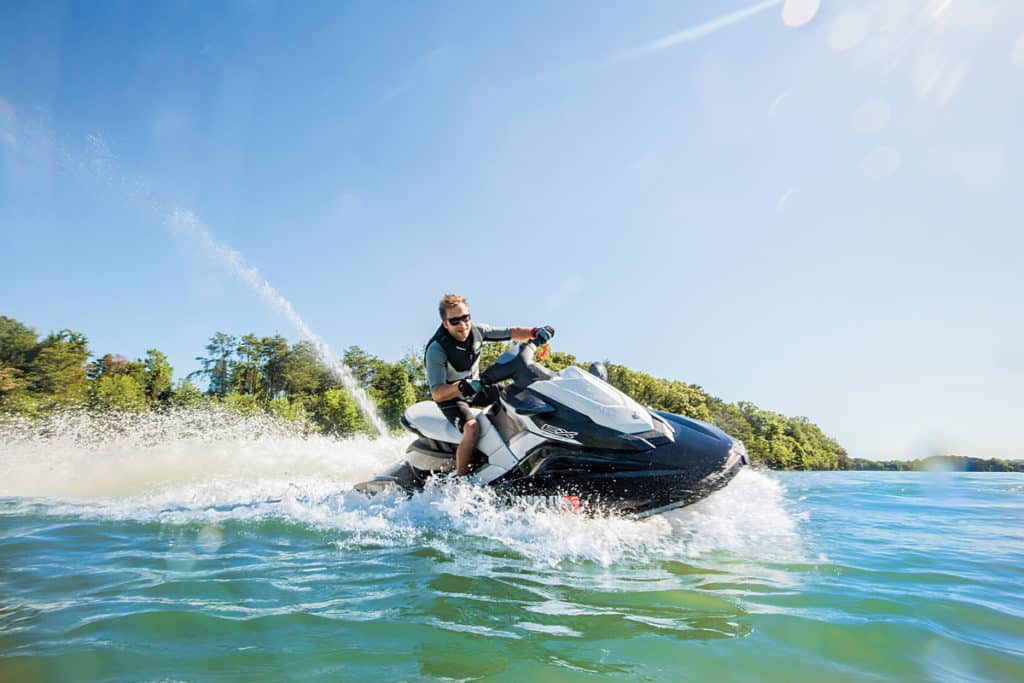
While all-new, the hull is based on the existing V1/VX platform, the basis for the best-selling line in the industry’s history. Dimensions were scaled down as a starting point. Further tweaking was then done to the shoulder, chines and strakes. As to the engine within, it’s a less powerful, 100 hp version of the award-winning, 1,049 cc, triple-cylinder TR-1 (normally rated at 130 hp) introduced in 2016. Both the exhaust manifold and muffler were downsized and lightened. The pump bulkhead was also removed, the flywheel built into the coupler, and the pump stator and impeller housing molded as one piece. Yamaha admits the lower horsepower made much of the changes possible, and all result in simpler parts and welcome cost savings.
The lower-horsepower engine plays well with the craft’s 584 pounds, making the most of the 100 ponies on tap to leverage the horsepower-to-weight ratio. We noted solid acceleration out of the hole and a 50 mph top speed in humid summer conditions. The engine also proves extremely fuel-efficient, besting the former entry-level MR-1 by about 20 percent. At full throttle, that translates to burning a mere 7.9 gph. At more realistic speeds, it equates to an affordable day of fun on the water.
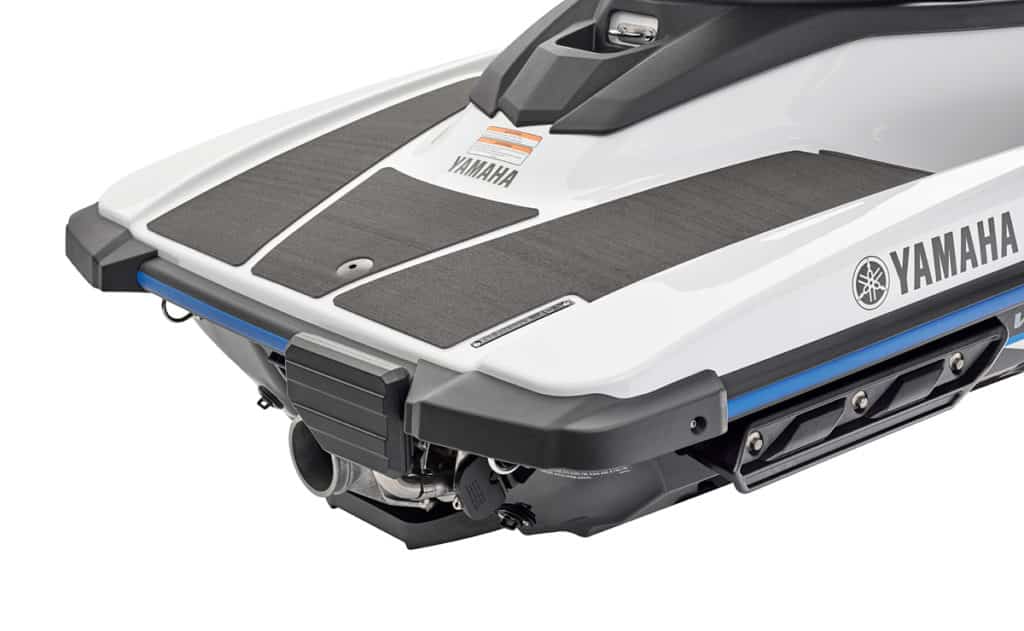
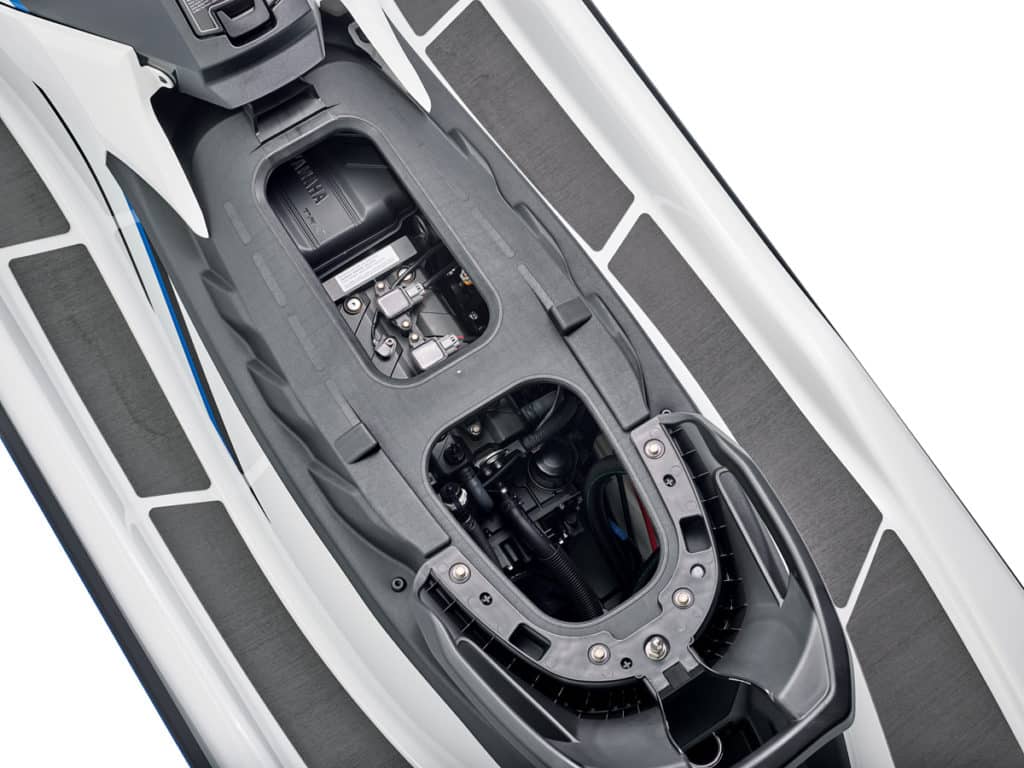
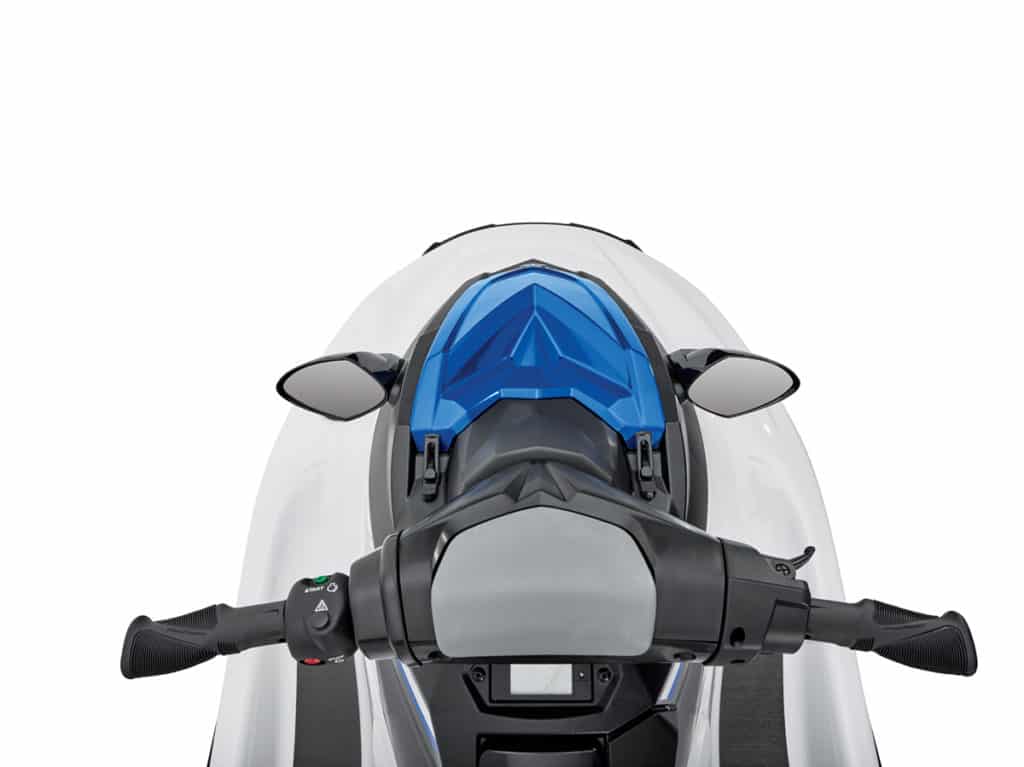
High Points
* Priced to compete with models on the pre-owned market.
* High-compression molding process results in a smooth finish and makes autolike paint jobs possible.
* Base, no-reverse version of the EX is available at $6,599; the EX Deluxe, with Yamaha’s full electronic reverse/deceleration system (RiDE), two-tone saddle and traction mats, is available at $8,599.
Low Points
* Standard stowage capacity is tops in its category overall but divided into three smaller compartments.
* Styling is conservative.
Toughest Competitor
Sea-Doo’s three-passenger Spark with a 90 hp Rotax 900 HO ACE engine, reverse, and similar storage capacity is $7,499. Sea-Doo’s electronic brake-and-reverse technology (iBR) is superior to the Sport’s mechanical reverse. The Sport has better fuel capacity, standard mirrors and a reboarding step.
Price: $7,599
Available Power: Jet Drive
How We Tested
Engine: Yamaha TR-1 1,049 cc three-cylinder four-stroke
Drive/Prop: 144 mm high-pressure jet pump with stainless-steel impeller
Gear Ratio: 1:00:1
Fuel Load: 10 gal.
Crew Weight: 155 lb.
Yamaha Motor Corporation
Kennesaw, Georgia; 800-962-7926; yamahawaverunners.com
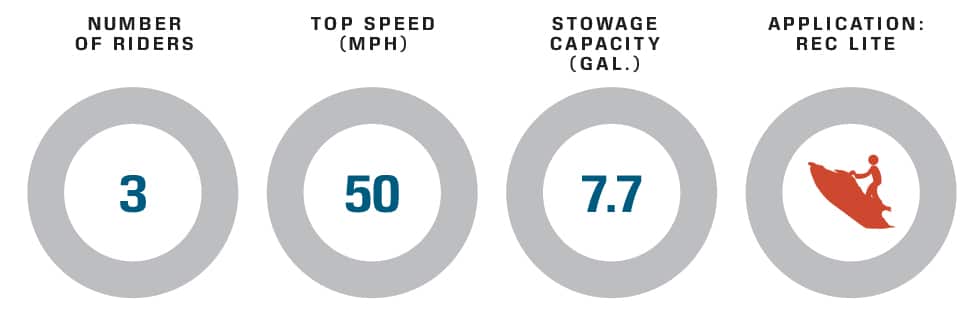
Yamaha Jet Boat Manufacturing – Kennesaw, Georgia; yamahaboats.com






